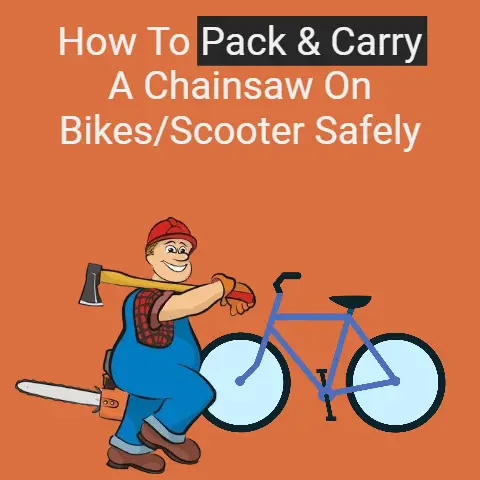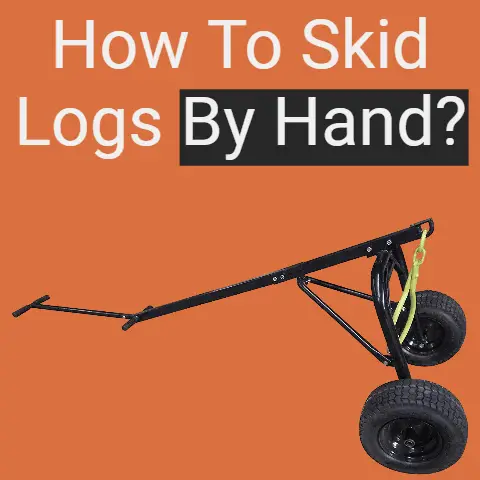Do Chainsaws Have a Compression Release? (Explained)
Chainsaws are powerful tools that utilize a two-stroke engine to rotate a chain of cutting teeth at high speeds. This allows them to cut through wood and logs with ease. A key component that enables a chainsaw engine to function properly is compression.
What is Compression and Why Does it Matter?
Compression is created when the rising piston pushes a fuel-air mixture into the combustion chamber and compresses it before ignition occurs. This compressed mixture is what provides the explosive force to drive the piston down during the power stroke. Higher compression ratios allow more power to be generated.
Without adequate compression, a two-stroke engine will not start or run properly. The compression must be high enough to get the fuel-air mixture to ignite. Over time, the piston rings and cylinder walls wear down, allowing some blow-by and loss of compression. This is why older chainsaws become difficult to start and lack power.
Maintaining good compression is vital for chainsaw performance and longevity. Fortunately, many chainsaws are equipped with a compression release mechanism to help in starting.
Do Chainsaws Have a Compression Release?
The short answer is: Yes, most chainsaws have a compression release. This mechanism temporarily lowers cylinder compression, making it much easier to pull-start the engine. Once started, it disengages automatically to restore full compression.
Chainsaw compression releases come in two main types:
1. Decompression Valve
This is a small valve set into the cylinder wall of the combustion chamber. When starting, the operator pushes this valve in, allowing some of the compression to bleed off before the spark plug fires.
Once the engine spins fast enough, centrifugal force pushes the valve back out, sealing the combustion chamber for proper running compression. This type of release needs to be activated manually for each start but ensures full compression when running.
2. Automatic Compression Release (ACR)
More advanced chainsaws utilize a mechanical system that temporarily opens the exhaust port in the cylinder when cranking. This vents off compression automatically during starting, without any manual activation needed.
The ACR system senses engine speed. At cranking RPMs, it holds the exhaust port slightly open. But once the engine starts and spins faster, it closes the exhaust, allowing full compression for cutting power. This simplifies starting by eliminating the need to find and push a small decomp valve each time.
Why Have a Compression Release at All?
Since compression is needed for proper combustion, why allow it to bleed off? There are two key reasons chainsaws utilize compression releases:
1. Making Pull-Starting Easier
The starting procedure on a chainsaw requires several sharp, forceful pulls on the starter cord. This spins the crankshaft fast enough to allow the spark plug to ignite the compressed fuel mixture inside, kicking the piston down on the power stroke.
Without a compression release, the operator would have to work much harder to overcome the high cylinder compression. Pulling the cord would feel like trying to “drag” the solid piston through a brick wall!
By bleeding off some compression, it takes significantly less strength and effort to spin the motor during starting. Once started, the release disengages and full compression is restored.
2. Reducing Strain on Starter Mechanism
Having no compression release would place great strain on the starter cord, pulleys, and recoil spring assembly. This could cause premature wear, cord fraying, or recoil spring failure. It also places high stress on the crankshaft and bearings while cranking.
By providing a compression release, the load on the starter system is greatly reduced. This prevents excessive damage from occurring and extends the service life of the recoil mechanism. The engine also cranks with less friction on its internal components.
Signs of Compression Release Issues
While compression releases are generally reliable, they can malfunction over time. Some signs your chainsaw’s compression release may not be working properly:
- Hard pulling when cranking – Must use excessive force to turn over
- Starter cord fraying prematurely
- Starter pulley or recoil spring damage
- Brief start but dies suddenly – Release isn’t disengaging
- Lack of power when cutting – Compression bleed-off continuing
If your chainsaw shows any of these symptoms, have a technician test its compression and inspect the compression release. A malfunction here can mimic other problems like bad fuel, spark issues, etc. Getting it fixed will make starting easier and restore lost power.
Testing a Chainsaw’s Compression Release
While some compression loss is expected over time from piston ring wear, a faulty compression release can make things much worse prematurely.
Here is one way to test a chainsaw’s compression release function:
Materials Needed:
- Compression tester gauge
- Extra spark plug (optional)
Procedure:
- Remove spark plug
- Install compression gauge tightly
- Activate compression release (if manual type)
- Pull starter cord sharply 3-4 times
- Note gauge reading
- Release compression release
- Pull cord sharply 1-2 more times
- Note new gauge reading
Ideally, the second reading should be at least 30% higher or more when the compression release is disengaged. If the readings are too similar, the release may not be functioning properly.
Having an extra spark plug allows repeating the test easily to verify. Be careful not to lose the compression tester seal when testing!
Fixing Compression Release Issues
If your chainsaw’s compression release is found to be malfunctioning, here are some steps to restore its proper operation:
1. Decompression Valve
- Disassemble valve components
- Check for sticking or binding
- Clean valve seat thoroughly
- Lap valve mating surfaces
- Reassemble with new gasket / seals
2. Automatic Compression Release
- Disassemble ACR mechanism
- Inspect parts for wear / gaps
- Replace any worn springs, plungers, cams
- Verify exhaust port sealing
- Reassemble to factory spec
For decomp valves, ensure the valve stem moves freely when pressed. The spring should snap it closed instantly.
On ACR systems, all moving pieces must function smoothly with no binding. Small gaps or misalignments can prevent proper operation.
Getting OEM replacement parts matched to your chainsaw is advisable for reliability. Install them carefully to factory torque specs.
Be sure to also check the piston, rings, cylinder bore, and spark arrestor screen while servicing compression components. Cleaning or replacing worn parts here can also help restore lost compression overall.
Tips for Maintaining Good Compression
Here are some helpful tips for keeping your chainsaw’s compression at optimum levels:
– Observe break-in procedure on new saws (helps seats rings)
– Use only fresh, ethanol-free fuel (prevents ring sticking)
– Clean air filter regularly (keeps intake flow unrestricted)
– Replace fuel filter annually (avoids fuel contamination)
– Check spark plug often (ensures good sparks)
– Clean cooling fins when dirty (prevents overheating damage)
– Store properly between uses (keeps moisture out)
– Follow factory maintenance schedule (keeps engine in top condition)
Careful break-in and conscientious maintenance go a long way toward maintaining the compression your chainsaw engine needs for easy starting and strong cutting power over the long run.
Be sure to use the manufacturer recommended spark plug, air filter, fuel filter, and replacement parts rather than generic equivalents. This helps ensure you get the right components engineered specifically for your chainsaw.
Frequently Asked Questions About Chainsaw Compression Releases
Wondering more about the compression release function on chainsaws? Here are answers to some common questions.
Q: Will a chainsaw run without a compression release?
It is possible for a chainsaw to run without a functioning compression release, but it would be extremely difficult to start. The operator would have to work very hard cranking against full cylinder compression. This also places undue strain on the starter mechanism which can cause premature failure. For reliable starting, a working compression release is recommended.
Q: Can a decompression valve cause lack of power?
If a manually activated decomp valve fails to close completely once the saw is running, it can indeed cause a lack of power. Partial decompression during operation will limit cylinder compression, resulting in weak performance and poor cutting ability. This is why many saws now use automatic compression releases instead.
Q: Why does my chainsaw die when I put choke off?
Assuming it starts fine on choke, dying when going to run likely indicates an issue with the automatic compression release. At higher RPMs, the ACR should close the exhaust port to allow proper compression. If it fails to seal due to dirt, wear, or damage, the saw cannot run. The ACR components should be inspected and cleaned or replaced as needed.
Q: What happens if compression release is always open?
An open compression release bleeds off cylinder pressure at all times. This prevents the fuel mixture from being sufficiently compressed on the upstroke for proper combustion. Much like running with a bad exhaust leak, the saw will either not start at all, start then die, or run with very little power if the compression release is stuck open.
Q: How long should a chainsaw compression release last?
When operating properly, the service life of a compression release system should be several years at least, often outlasting many other chainsaw components. Manual decomp valves can operate reliably for 5+ years.
Automatic compression releases average 3-5 years or longer unless contaminated with carbon buildup or physically damaged. Replacing worn piston rings helps compression releases last even longer.
Maintaining your chainsaw engine according to the manufacturer’s recommendations gives the compression release the best chance of functioning properly for maximum starting ease and cutting power over time.
I hope you found this comprehensive article on chainsaw compression releases helpful. Let me know if you have any other questions!







